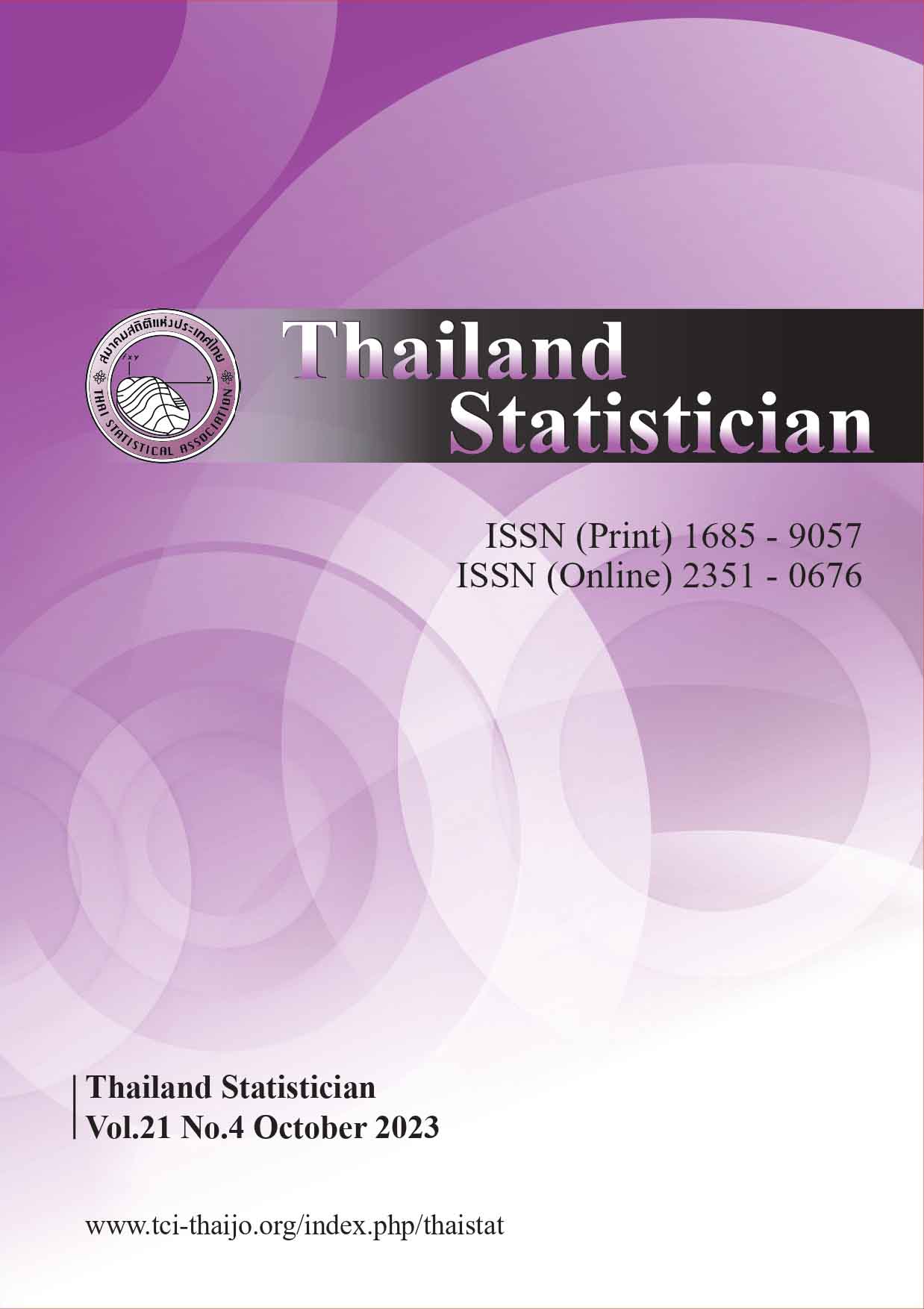Estimating the Unknown Size of a Population based upon Re-parameterized Geometric Distribution
Keywords:
Capture-recapture data, heterogeneity, one-inflation, variance estimationAbstract
Estimating the unknown size of a partially observed population is challenging particularly when most of observed subjects are captured once. Geometric distribution, one of the most well-utilized discrete distributions in a capture-recapture setting, is re-parameterized corresponding to the uniform Poisson Ailamujia, a flexible model for data set with excesses of ones. The maximum likelihood and Generalized Turing estimators using uniform Poisson Ailamujia distribution were proposed. We address achieving variance estimates of population size estimators by using conditioning approach. In simulation studies, potential of the proposed estimators as well as the confidence interval are investigated and compared to conventional estimators developed on the basis of geometric distribution.
All estimators behaved similarly and the presented confidence intervals can improve the estimation.
As an application, two real data examples are examined using the proposed estimators.
References
Aljohani HM, Akdogan Y, Cordeiro GM, Afify AZ. The uniform Poisson– Ailamujia distribution: ˘
Actuarial measures and applications in biological science. Symmetry. 2021; 13(7):1258.
Anan O, Bohning D, Maruotti A. On the Turing estimator in capture–recapture count data under the ¨
geometric distribution. Metrika. 2019; 82(2): 149-172.
Bohning D. A simple variance formula for population size estimators by conditioning. Stat Methodol. ¨
; 5(5): 410-423.
Bohning D, Friedl H. Population size estimation based upon zero-truncated, one-inflated and sparse ¨
count data. Stat Methods Appt. 2021; 30(4): 1197-217.
Bohning D, Kaskasamkul P, van der Heijden PG. A modification of Chao’s lower bound estimator in ¨
the case of oneinflation. Metrika. 2019; 82(3): 361-384.
Bohning D, Lerdsuwansri R, Sangnawakij P. Modelling Covid-19 contact-tracing using the ratio re- ¨
gression capture-recapture approach. Biometrics. 2023: 1-13.
Bohning D, Ogden HE. General flation models for count data. Metrika. 2021; 84(2): 245-261. ¨
Cruyff MJ, Van Der Heijden PG. Point and interval estimation of the population size using a zerotruncated negative binomial regression model. Biom J. 2008; 50(6): 1035-1050.
Godwin RT. One-inflation and unobserved heterogeneity in population size estimation. Biom J. 2017;
(1): 79-93.
Godwin RT, Bohning D. Estimation of the population size by using the one-inflated positive Poisson ¨
model. J R Stat Soc Ser C Appl Stat. 2017; 66(2): 425-448.
Jongsomjit T, Lerdsuwansri R, Lanumteang K. Estimation of population size based on zerotruncated,one-inflated and covariate information. In: Proceedings of the 2nd International Conference on Science Technology and Innovation Maejo University; 2022 Mar 18; Thailand. 2022.
pp. 29-35.
Lerdsuwansri R, Sangnawakij P, Bohning D, Sansilapin C, Chaifoo W, Polonsky JA, et al. Sensitivity ¨
of contact-tracing for COVID-19 in Thailand: a capturere capture application. BMC Infect Dis.
; 22(1): 1-10.
Liuzzo M, Borella S, Ottonello D, Arizza V, Malavasi S. Population abundance,structure and movements of the European pond turtle, Emysorbicularis (Linnaeus1758) based on capture-recapture
data in a Venice Lagoon wetland area, Italy. Ethol Ecol Evol. 2021; 33(6): 561-75.
Nguyen LT, Patel S, Nguyen NT, Gia HH, Raymond HF, Abdul-Quader AS, et al. Population
Size Estimation of Female Sex Workers in Hai Phong, Vietnam:Use of Three Source Capture–RecaptureMethod. J Epidemiol Glob Health. 2021; 11(2): 194.
Niwitpong Sa, Bohning D, van der Heijden PG, Holling H. Capture–recapture estimation based upon ¨
the geometric distribution allowing for heterogeneity. Metrika. 2013; 76(4): 495-519.
Pijitrattana P. A flexible, discrete and smooth capture-recapture model based upon counts of repeated
identifications using validation samples. PhD [dissertation]. Thammasat University; 2018.
Sansamur C, Wiratsudakul A, Charoenpanyanet A, Punyapornwithaya V. Estimating the number of
farms experienced foot and mouth disease outbreaks using capture-recapture methods. Trop
Anim Health Prod. 2021; 53(1): 1-9.
Tajuddin RRM, Ismail N. Comment on Aljohani et al. The Uniform Poisson– Ailamujia Distribution: Actuarial Measures and Applications in Biological Science. Symmetry 2021, 13, 1258.
Symmetry. 2022; 14(1): 121.
Van Der Heijden PG, Bustami R, Cruyff MJ, Engbersen G, Van Houwelingen HC. Point and interval
estimation of the population size using the truncated Poisson regression model. Stat Modelling.
; 3(4): 305-322.
Downloads
Published
How to Cite
Issue
Section
License

This work is licensed under a Creative Commons Attribution-NonCommercial-NoDerivatives 4.0 International License.




